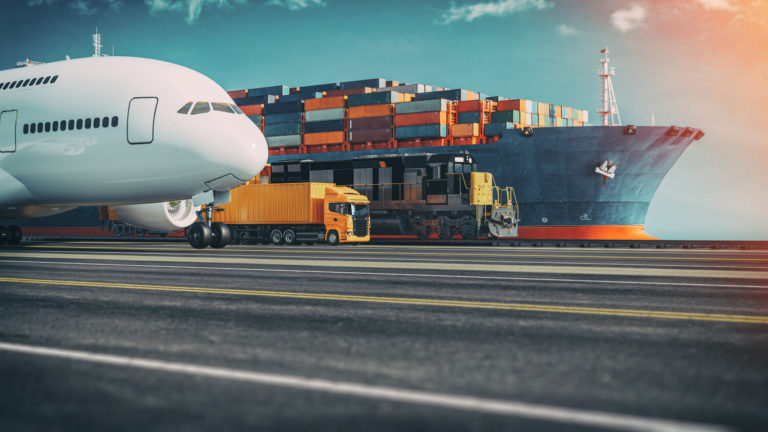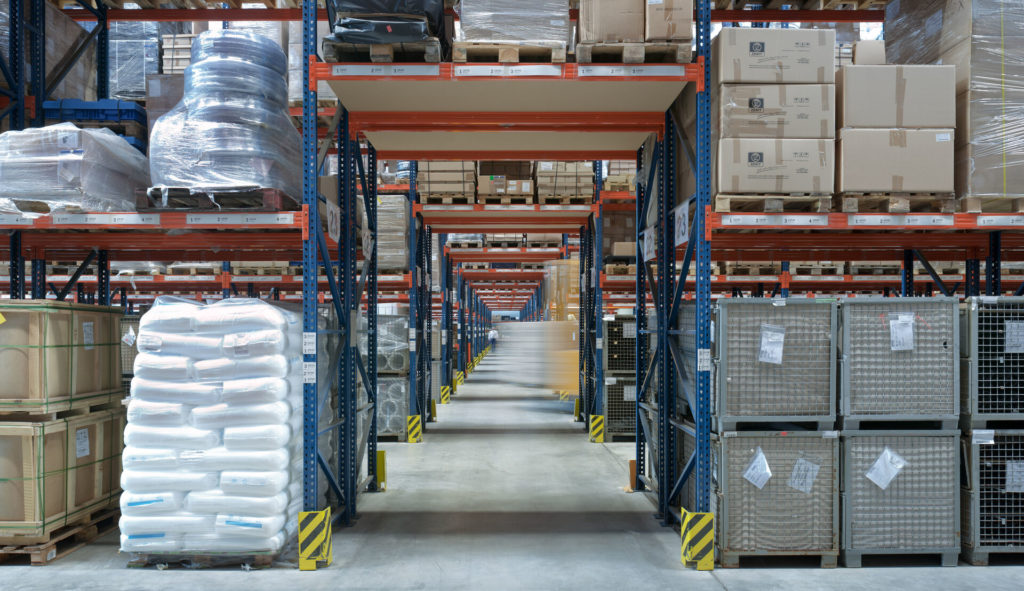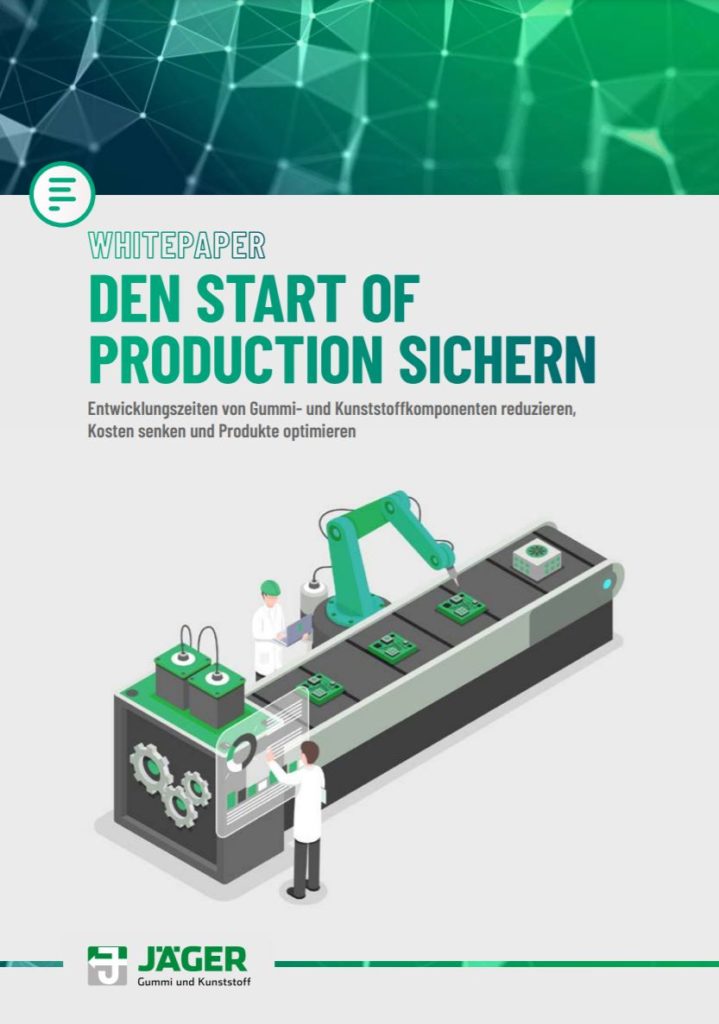
JÄGER Business Blog


WHITEPAPER
Find out which factors influence your SOP!
Global sourcing is still considered the gold standard of procurement strategies, even in the rubber and plastics industry. Sourcing molded parts from Southeast Asia is so widespread that many companies no longer even consider other options. However, purchasing decision-makers are unnecessarily limiting themselves with this mindset, because even global sourcing is not a universal solution for all procurement scenarios. It often makes sense to switch to German suppliers, despite the higher purchase price.
One thing must be made clear from the outset: German suppliers are not fundamentally better than international ones. There are also excellent rubber, plastics and tool producers in other countries that supply top-quality goods. In addition, international suppliers often have branded products from large corporations in their portfolio, the quality of which is the same all over the world.
However, the prices of these top suppliers are also correspondingly high for local conditions, which contradicts the intentions of global sourcing. It makes little sense to transport goods halfway around the world if the purchase price is ultimately the same as what a German manufacturer would have charged. Those who purchase goods from overseas usually do so in order to reduce costs. And this is almost always at the expense of quality.
The issue here is not the general level of quality, but consistency. The dimensional tolerances of low-cost international suppliers are often much higher than German companies are used to. For example, it is common for the Shore hardness of rubber sheets to be specified with a tolerance of ±5 points. In contrast, tolerances of ±10 points are very often applied to export goods, which can result in large differences for the customer. Thus, one batch of washers may have a hardness of 75 Shore and the next a hardness of 60 Shore, even though both have passed the supplier’s quality test.
For production, such high variation is problematic. European standards and regulations in particular leave little room for variation. However, this fact is often difficult to communicate to overseas suppliers. From their point of view, the requirements of German customers seem meticulous, which makes coordination even more difficult.
Developing new products when companies from several countries are involved is a difficult process. Communication and coordination are already time-consuming under normal circumstances. If prototyping is added, the effort increases further. In the rubber and plastics sector, there are usually two sampling loops before the molded part goes into production. If a defect is discovered here, the supplier has to make improvements and send the sample to Germany again, which can take several days even by airmail.
In moldmaking, these delays are even more serious. If an error occurs here, the customer must send the tool back for correction. By sea, this can take six to ten weeks. The air route is faster, but eats up the price advantage. Then the supplier has to rework and send the tool back to Europe. The entire process can take three to four months.
There are ways to reduce these delays, but they come with other drawbacks. Sending personnel abroad to sample the tool, for example, is not always practical. In turn, bringing in a German manufacturer for rework negates the cost advantage of global sourcing.

Central warehouse of the JÄGER Group
The greater the distance between client and production partner, the more difficult it is to work together. This starts with the fact that office hours may not overlap in different time zones.
China, for example, is seven hours ahead of Germany. A query in the afternoon from a German company does not reach the Chinese colleagues until late in the evening. Their answer does not reach Europe until the next morning. This makes dialog difficult. Telephone calls or web meetings are also problematic because there is only a short window of time in which the office hours of both companies overlap.
In addition, there are intercultural communication problems. The German way of communicating is perceived abroad as very direct. Cultures in Southeast Asia, on the other hand, tend to communicate indirectly and avoid putting another person on the spot. Such differences sometimes lead to misunderstandings. Differences in working methods can also be problematic. The typical German focus on details and precision is not shared by all countries, which can lead to conflicts.
In addition, one must not forget the technical side. Companies abroad sometimes use different software solutions or communication standards that are not always compatible with their German counterparts. CAD systems are a good example of this. Electronic design drawings from German companies sometimes cannot be opened by international partners, or they arrive distorted. This creates additional coordination effort.
In addition to the production-specific challenges of global sourcing, there are disadvantages that every company that sources goods from overseas accepts. In addition to long basic delivery times, these include the risk for unplanned events that delay on-time delivery. These can be bad weather conditions, but also congestion at bottlenecks or busy transshipment points. Political factors also play a role. For example, in August 2021, Chinese authorities closed the country’s second-largest container port to combat a pandemic, affecting supply chains around the world.
Flexibility also suffers when a company sources rubber and plastic molded parts from overseas. Peak demand is difficult to meet when additional supplies are traveling in containers for several weeks. Added to this are legal requirements that pose challenges to global supply chain management, for example environmental regulations or the EU’s Supply Chain Act.
Global sourcing is so widespread as a procurement strategy that many companies no longer even consider other options. However, such tunnel vision is always risky. For all its strengths, global sourcing of rubber and plastic molded parts also has some disadvantages that can have serious consequences depending on the situation. These include pronounced variations in quality, potential communication problems with production partners and long delivery times.
Of course, this does not mean that manufacturing companies should abandon global sourcing as a matter of principle. However, it is worth reconsidering entrenched sourcing strategies and checking whether a rubber and plastics supplier in Germany might be the better choice. “Just go to China” is not always the best strategy.

Whitepaper: Secure the Start of Production
Learn which factors influence your SOP!

Werner Kruckenberg has been working in sales at Jäger since 1981. The trained wholesale and foreign trade merchant has managed the Nuremberg/Fürth site since 2001.
Share this post!
Jäger Gummi und Kunststoff GmbH
Lohweg 1
30559 Hannover
Tel. +49 511 – 53580
Fax +49 511 – 553394
info@jaeger-gk.de
Management:
Dr.-Ing. Andreas Jäger und
Julius Jäger
Hanover Register Court HRB 59798
DE 813 314 161

Petra Dirlenbach